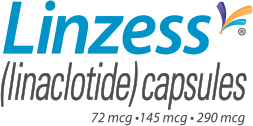In addition to a treatment plan, a Low FODMAP diet can help you manage constipation and the unwanted symptoms that go along with it: gas, bloating, and belly pain. Eating fewer FODMAPs can go a long way in improving your gut health. But what exactly are FODMAPs?
Breaking Down “FODMAP”
FODMAP stands for “Fermentable Oligosaccharide Disaccharide Monosaccharide and Polyols.” Don’t worry—there won’t be a quiz! Simply put, FODMAPs are carbs that your small intestine doesn’t absorb well—so do your best to avoid them whenever possible. Here’s a look at the FODMAPs:

Oligosaccharides
Wheat, rye, legumes, and fruits and veggies such as garlic and onions.

Disaccharides
Milk, yogurt, and soft cheese—lactose is the main carb here.

Monosaccharides
Fruits like apples and pears and sweeteners that are chock-full of fructose.

Polyols
Fruits like peaches and blackberries and low-cal sweeteners that end in “-ol.”
Mapping out a Low FODMAP Diet

THE FODMAP SWAP Replace High FODMAPs with Low FODMAPs for 4-6 weeks. This part's only temporary.
READ THE LABELS Look for unexpected FODMAPs hidden in the ingredients of certain foods.
KNOW YOUR PORTIONS Low FODMAPs in higher quantities can still trigger symptoms.
BE PREPARED Pack Low FODMAP options when on-the-go to avoid spontaneous snacking.
BE PATIENT Slowly reintroduce High FODMAP foods and take note of any change in symptoms.
IDENTIFY YOUR TRIGGERS Most people find that only 1 or 2 foods were the culprits. Cut those long-term to keep symptoms in check.
Sources:
“FODMAPs and Irritable Bowel Syndrome.” Monash University. www.monashfodmap.com/about-fodmap-and-ibs/. Accessed 3 Nov. 2021.
Gaukroger, Amanda. “What To Expect When Starting A Low FODMAP Diet.” The FODMAP Challenge. 20 Oct. 2020,
www.fodmapchallenge.com/what-to-expect-when-starting-a-low-fodmap-diet/. Accessed 3 Nov. 2021.
More Like This

Is Your Pantry FODMAP-Friendly?
Read the article
Good for Your Gut— Flavorful Food Swaps
Read the article
Tackling IBS-C Triggers
Read the article



